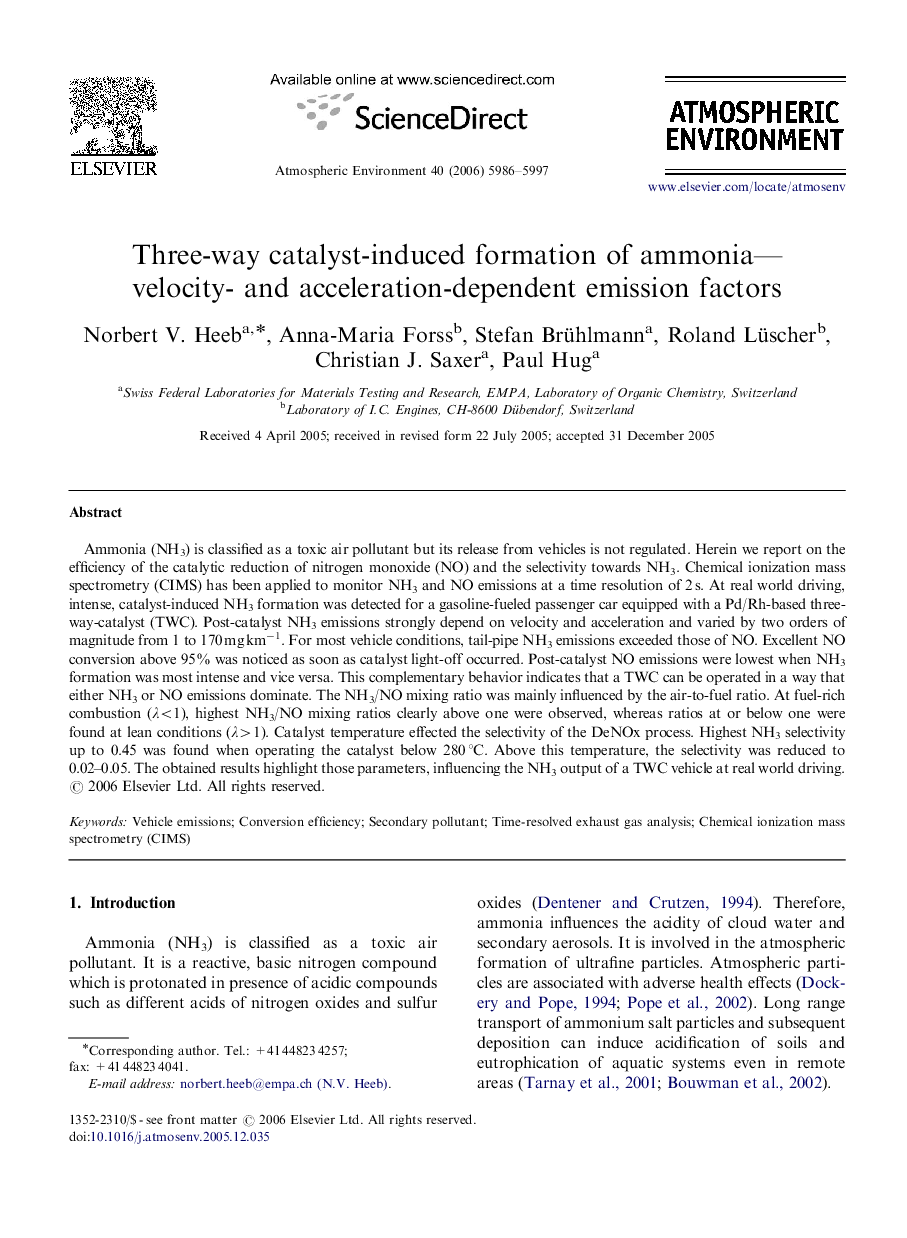| Article ID | Journal | Published Year | Pages | File Type |
|---|---|---|---|---|
| 4444585 | Atmospheric Environment | 2006 | 12 Pages |
Ammonia (NH3) is classified as a toxic air pollutant but its release from vehicles is not regulated. Herein we report on the efficiency of the catalytic reduction of nitrogen monoxide (NO) and the selectivity towards NH3. Chemical ionization mass spectrometry (CIMS) has been applied to monitor NH3 and NO emissions at a time resolution of 2 s. At real world driving, intense, catalyst-induced NH3 formation was detected for a gasoline-fueled passenger car equipped with a Pd/Rh-based three-way-catalyst (TWC). Post-catalyst NH3 emissions strongly depend on velocity and acceleration and varied by two orders of magnitude from 1 to 170 mg km−1. For most vehicle conditions, tail-pipe NH3 emissions exceeded those of NO. Excellent NO conversion above 95% was noticed as soon as catalyst light-off occurred. Post-catalyst NO emissions were lowest when NH3 formation was most intense and vice versa. This complementary behavior indicates that a TWC can be operated in a way that either NH3 or NO emissions dominate. The NH3/NO mixing ratio was mainly influenced by the air-to-fuel ratio. At fuel-rich combustion (λ<1), highest NH3/NO mixing ratios clearly above one were observed, whereas ratios at or below one were found at lean conditions (λ>1λ>1). Catalyst temperature effected the selectivity of the DeNOx process. Highest NH3 selectivity up to 0.45 was found when operating the catalyst below 280 °C. Above this temperature, the selectivity was reduced to 0.02–0.05. The obtained results highlight those parameters, influencing the NH3 output of a TWC vehicle at real world driving.
